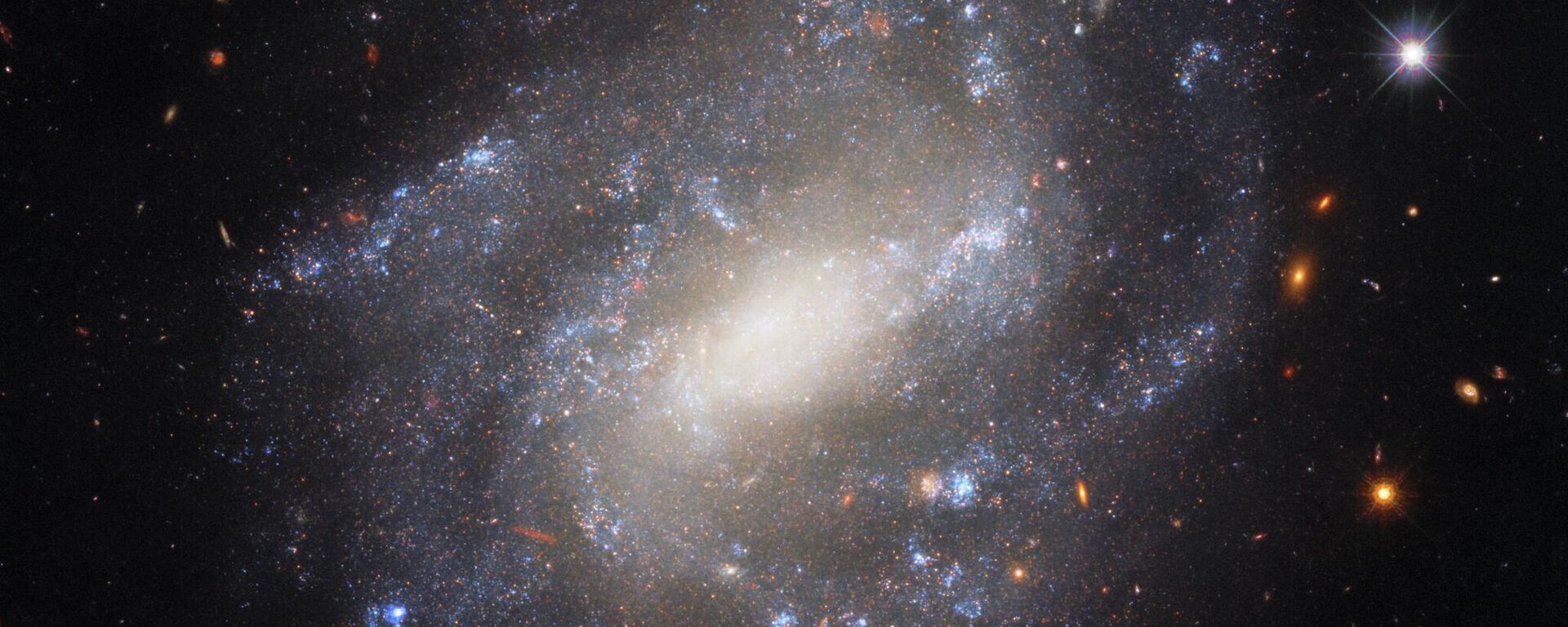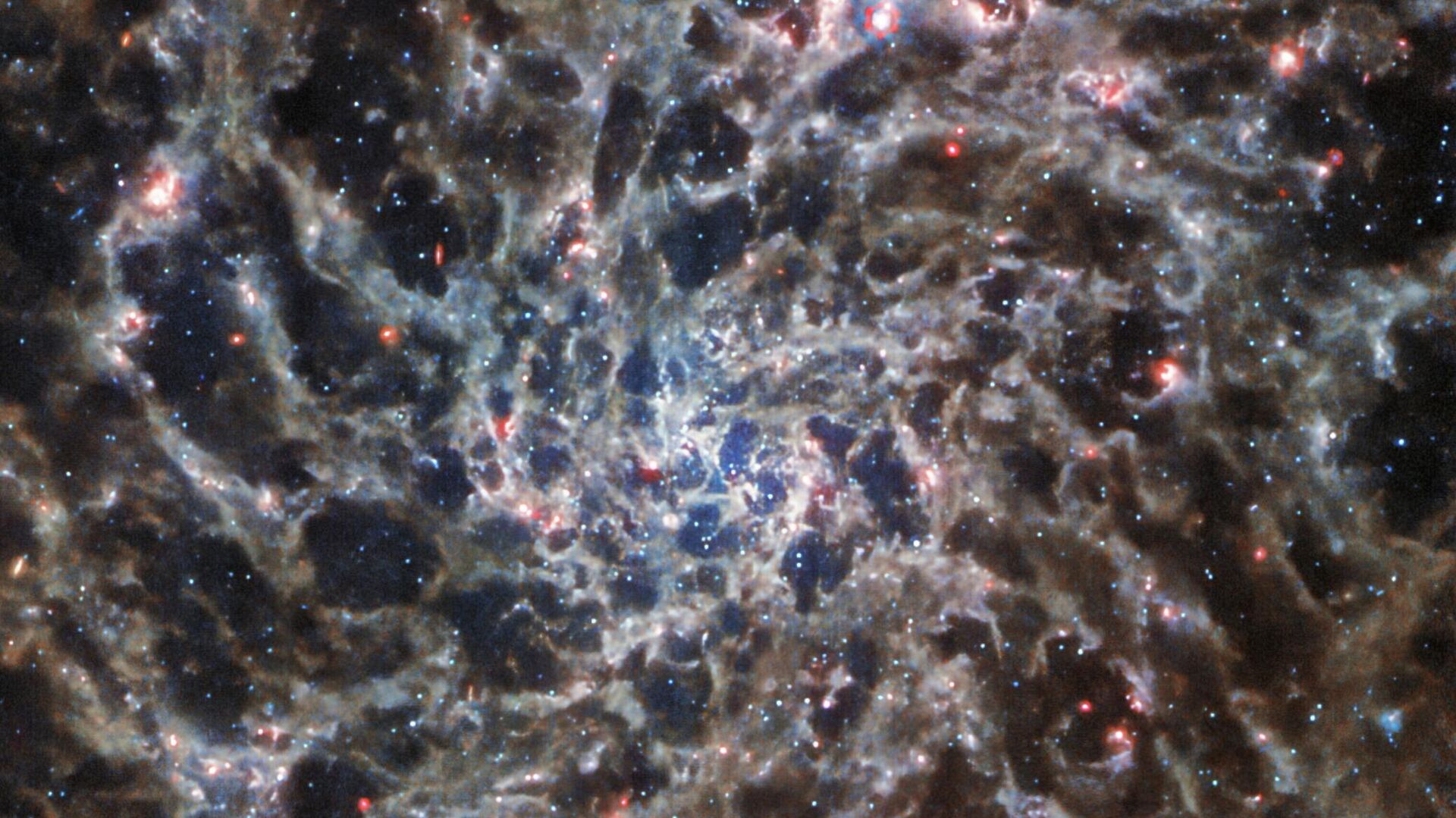https://sputnikglobe.com/20230429/second-ring-on-dwarf-planet-quaoar-challenges-fundamental-laws-of-astrophysics-1109931237.html
Second Ring on Dwarf Planet Quaoar Challenges Fundamental Laws of Astrophysics
Second Ring on Dwarf Planet Quaoar Challenges Fundamental Laws of Astrophysics
Sputnik International
An international team of astronomers has made a groundbreaking discovery regarding Quaoar, a dwarf planet within the Kuiper belt that was first pinpointed by scientists in the early 2000s.
2023-04-29T00:40+0000
2023-04-29T00:40+0000
2023-06-20T17:11+0000
beyond politics
science & tech
david roche
michael brown
space
asteroids
space exploration
https://cdn1.img.sputnikglobe.com/img/07e6/0a/09/1101647280_0:440:2077:1608_1920x0_80_0_0_3f8ab49236e8682c6a5aedc3919136ab.jpg
Scientists have unearthed evidence proving that the fairly newly discovered dwarf planet Quaoar is not circled by a lone ring but by two rings.The finding marks yet another challenge to current theories on the formation of ring systems and moons as both rings exist beyond the Roche limit, defined as the minimum distance in which a large planetary satellite can approach its primary body without tidal forces disrupting internal gravity.The study's discovery effectively contradicts theories that posit material within the Roche limit should be drawn apart by tidal forces, resulting in a ring, while material outside of it would form a satellite.Ring systems are commonly observed in massive planets; however, rings can also occur in plutoids - small planets beyond the orbit of Neptune. Main theories state the leading role of gravitational dominance, when there are no other massive bodies around for millions of kilometers, that even a dwarf planet can capture debris and "ring" itself.However, further observations showed Quaoar's rings are unusual as they are recorded as being very dense, only a few kilometers wide, and both lie beyond the Roche limit.It remains unclear why both rings did not merge and form a moon; however, officials have speculated that Weywot, a moon of Quaoar, could be behind the ring formations.The two rings are not visible to the naked eye, and were only discovered through the observation of Quaoar passing in front of distant stars. Scientists were able to discern the presence of the first ring through changes in the starlight's intensity.By pointing their equipment at the planet during a subsequent occultation, they were able to detect the second ring in greater detail. Notably, officials discovered it contains a dense core only a few miles wide. The team plans to continue studying the rings during future occultations.Michael Brown and Chad Trujillo were first to discover Quaoar in 2002. Subsequent research has indicated that it is about one twelfth of the Earth's diameter and contains water ice on its surface, as well as signs of volcanoes erupting water due to low temperatures.The study was accepted for publication in the journal Astronomy & Astrophysics.
https://sputnikglobe.com/20230209/astronomers-find-anomalous-ring-on-dwarf-planet-in-solar-system-study-reveals-1107099178.html
https://sputnikglobe.com/20230428/repeating-alien-radio-signals-from-space-may-unlock-one-of-astronomys-mysteries-1109916456.html
Sputnik International
feedback@sputniknews.com
+74956456601
MIA „Rossiya Segodnya“
2023
News
en_EN
Sputnik International
feedback@sputniknews.com
+74956456601
MIA „Rossiya Segodnya“
Sputnik International
feedback@sputniknews.com
+74956456601
MIA „Rossiya Segodnya“
quaoar, plutoids, kuiper belt, roche law, weywot, space exploration, recent prominent space discovery, michael brown, chad trujillo
quaoar, plutoids, kuiper belt, roche law, weywot, space exploration, recent prominent space discovery, michael brown, chad trujillo
Second Ring on Dwarf Planet Quaoar Challenges Fundamental Laws of Astrophysics
00:40 GMT 29.04.2023 (Updated: 17:11 GMT 20.06.2023) An international team of astronomers has made a groundbreaking discovery regarding Quaoar, a dwarf planet within the Kuiper belt that was first pinpointed by scientists in the early 2000s.
Scientists have unearthed evidence proving that the fairly newly discovered dwarf planet Quaoar is not circled by a lone ring but by two rings.
The finding marks yet another challenge to current theories on the formation of ring systems and moons as both rings exist beyond the Roche limit, defined as the minimum distance in which a large planetary satellite can approach its primary body without tidal forces disrupting internal gravity.
The study's discovery effectively contradicts theories that posit material within the Roche limit should be drawn apart by tidal forces, resulting in a ring, while material outside of it would form a satellite.

9 February 2023, 01:22 GMT
Ring systems are commonly observed in massive planets; however, rings can also occur in plutoids - small planets beyond the orbit of Neptune. Main theories state the leading role of gravitational dominance, when there are no other massive bodies around for millions of kilometers, that even a dwarf planet can capture debris and "ring" itself.
However, further observations showed Quaoar's rings are unusual as they are recorded as being very dense, only a few kilometers wide, and both lie beyond the Roche limit.
It remains unclear why both rings did not merge and form a moon; however, officials have speculated that Weywot, a moon of Quaoar, could be behind the ring formations.
The two rings are not visible to the naked eye, and were only discovered through the observation of Quaoar passing in front of distant stars. Scientists were able to discern the presence of the first ring through changes in the starlight's intensity.
By pointing their equipment at the planet during a subsequent occultation, they were able to detect the second ring in greater detail. Notably, officials discovered it contains a dense core only a few miles wide. The team plans to continue studying the rings during future occultations.
Michael Brown and Chad Trujillo were first to discover Quaoar in 2002. Subsequent research has indicated that it is about one twelfth of the Earth's diameter and contains water ice on its surface, as well as signs of volcanoes erupting water due to low temperatures.
The study was accepted for publication in the journal
Astronomy & Astrophysics.







